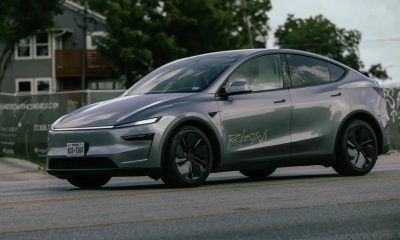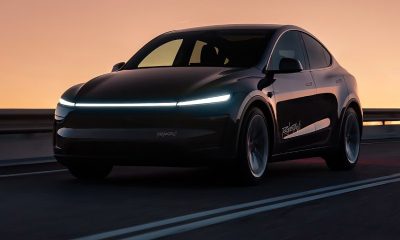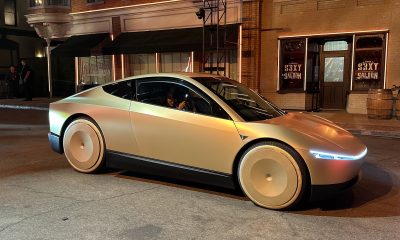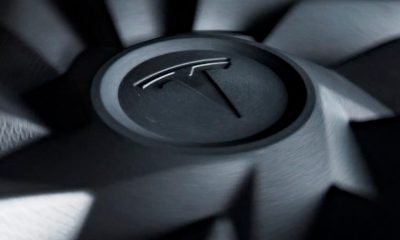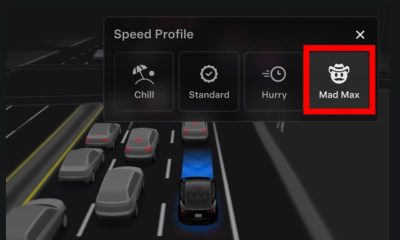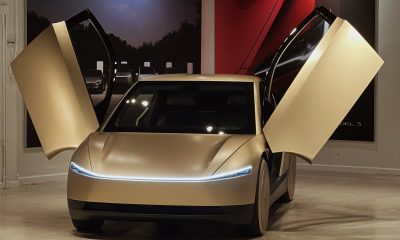News
Full autonomy will arrive sooner than expected, says Tesla CEO
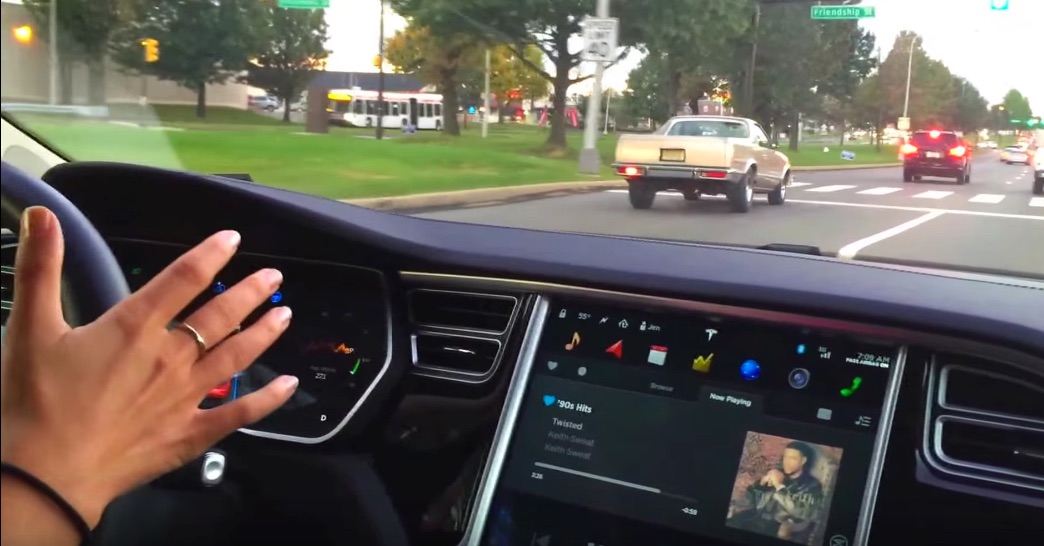
During the Tesla Motors earnings call on Wednesday, Elon Musk told analysts and investors, “Full autonomy is going to come a hell of a lot faster than anyone thinks it will. And I think what we’ve got under development is going to blow people’s minds. Blows my mind.”
Full autonomy will reduce fatalities
He bemoaned the amount of attention being paid to the first fatality while using Autopilot. Even though there are more than 32,000 highway deaths a year in America — a number that has gone up recently as cheap gasoline has led to an increase in the number of miles driven — the media, regulators, and even Congress have been talking non-stop about the death of Joshua Brown on May 7.
“Tesla can’t sneeze without there being a national headline,” Musk said. He promised that work on full autonomous driving would continue with the intention of making it available as soon as possible. It will make the Tesla Minibus possible, an idea that was contained in Musk’s Master Plan Part Deux when it was revealed last month.
Tesla to make own inverter
Even though the Tesla/SolarCity merger is not yet a done deal, Musk is behaving as if it is inevitable. A critical piece of any solar power system is the inverter. It converts the direct current supplied by solar panels into the alternating current used by homes and businesses. It is essential to the Tesla Powerwall residential storage battery system.
“There’s no question Tesla’s going to do an integrated inverter. It’s the logical thing to do,” said Musk during the conference call. “Most people don’t even know what an inverter is.”
Until this point, Tesla has been using inverters supplied by third parties, but Musk has a preference for bringing as many components of his products in-house, where design and supplies can be tightly controlled.
Climbing out of “factory hell”
Musk told analysts on Wednesday that Tesla “just managed to climb out of hell” in June but now the “production line is humming.” The company reported weekly production stood at 2,000 cars by the end of the quarter. Musk expects that number to increase to 2,200 cars a week in Q3 and rise higher still to 2,400 cars a week by the end of the year.
Burned by persistent delays from suppliers for the Model X, he sent a warning to suppliers involved with the production of the Model 3, saying “suppliers who fall short will be cut out of the picture.”
EPS disappoint
Tesla reported a lost of $1.06 per share for Q2, which was considerably more than most analysts expected. The stock was down immediately after the earnings call but quickly rebounded in after hours trading. The stock reaction is “another lesson that Tesla’s stock doesn’t trade over earnings per share,” said analyst Ben Kallo of Robert W. Baird & Co. “Automotive gross margin improved, and the commentary about demand helps with the stock as well.”
As much as Elon dislikes the attention being paid to Tesla because of the death of Joshua Brown, his company gets more press attention than all other car makers combined — a critical part of Tesla’s plan to market its cars without the benefit of traditional advertising.
That flood of news about Tesla, which focuses mostly on the consistently buoyant projections from Musk himself, is what keeps the company’s stock price high. People aren’t buying today’s performance. They are buying the future. If you believe everything Elon Musk is saying, that future looks very bright indeed.
Source: Bloomberg, Photo credit: Electric Jen
News
Elon Musk: Tesla autonomous driving might spread faster than any tech
The CEO noted that “hardware foundations have been laid for such a long time.”

Elon Musk has shared one of his most optimistic forecasts for Tesla’s self-driving rollout yet. As per the CEO, Tesla’s self-driving system could see the fastest technological adoption in history, thanks to the fleet’s capability to gain autonomous capabilities through a software update.
The CEO shared his forecast in a post on social media platform X.
Tesla’s aims to scale autonomy
Musk’s comment came as a response to industry watcher Sawyer Merritt, who posted a comparison between the geofence of Tesla’s Robotaxi network and Waymo’s service area. As can be seen in the graphic, Tesla’s Austin geofence has gotten noticeably larger compared to Waymo’s service area.
In his response, Musk stated that “Tesla autonomous driving might spread faster than any technology ever.” He also stated that “hardware foundations have been laid for such a long time,” as a software update could unlock full autonomy “for millions of pre-existing cars in a short period of time.”
Musk’s comment bodes well for Tesla’s Robotaxi ambitions, which seem to be finally in reach with the deployment of Unsupervised FSD in vehicle factories, as well as Austin and the Bay Area. For now, however, Tesla’s Austin Robotaxis and Bay Area ride-hailing vehicles are still operated with a safety monitor in the driver’s seat.
Tesla’s latest Austin expansion
Tesla recently expanded its Austin Robotaxi service area this week to 243 square miles, its largest yet and nearly triple the coverage from two months ago. The move outpaces Waymo’s local service footprint, which remains at around 90 square miles.
The expansion marks Tesla’s second major Austin update since August and emphasizes its push to dominate the autonomous ride-hailing landscape. With both Tesla and Waymo racing to prove scale and reliability, Musk’s confidence suggests the real contest may be about who can move fastest once the tech flips on across Tesla’s fleet. Once that happens, Tesla would effectively be able to win the self-driving race.
News
Tesla sends clear message to Waymo with latest Austin Robotaxi move
It is the first expansion Tesla has made in Austin since the one on August 26. The company still operates in the Bay Area of California as well, referring to that program specifically as a “ride-hailing service.”

Tesla has sent a clear message to Waymo with its latest move to its Robotaxi program in Austin, Texas.
Tesla and Waymo are the two true leaders in autonomous ride-hailing to an extent. Tesla has what many believe is a lot of potential due to its prowess with the Supervised Full Self-Driving suite. It is also operating a driverless Robotaxi service in Austin with a “Safety Monitor” that sits in the passenger’s seat.
Tesla explains why Robotaxis now have safety monitors in the driver’s seat
The two companies have been competing heavily in the market since they both launched driverless ride-hailing services in Austin this year: Waymo’s in March and Tesla’s in June.
One of the main drivers in the competition between the two is service area size, or the geofence in which the cars will operate without a driver. In August, the two were tied with a service area of about 90 square miles (233.099 sq. km).
Tesla then expanded to about 170 square miles (440.298 sq. km) on August 26, dwarfing Waymo’s service area and expanding to freeways. Tesla’s freeway operation of the Robotaxi suite requires the Safety Monitor to be in the driver’s seat for safety reasons.
On Tuesday evening, Tesla made another move that sent a clear message to Waymo, as it expanded once again, this time to 243 square miles (629.367 sq. km).
This is according to Robotracker:
Here’s a comparison of Tesla’s geofence in Austin vs. Waymo’s
Tesla’s now spans 243 square miles, almost three times the size of Waymo’s at 89 square miles https://t.co/OCAHQDQhzb pic.twitter.com/wq5bHQXCp4
— TESLARATI (@Teslarati) October 29, 2025
It is the first expansion Tesla has made in Austin since the one on August 26. The company still operates in the Bay Area of California as well, referring to that program specifically as a “ride-hailing service.”
Yesterday, it expanded that service to the San Jose Mineta International Airport, something it has been working on for several months.
Waymo has its own set of distinct advantages over Tesla as well, as it operates in more cities and states than the EV maker. Waymo currently has its autonomous vehicle services in Phoenix, Arizona, San Francisco, Los Angeles, Austin, and Atlanta, Georgia.
Tesla plans to have half of the U.S. population with access to the Robotaxi platform by the end of the year.
News
Tesla exec reveals shock development with Cybercab
“If we have to have a steering wheel, it can have a steering wheel and pedals.”
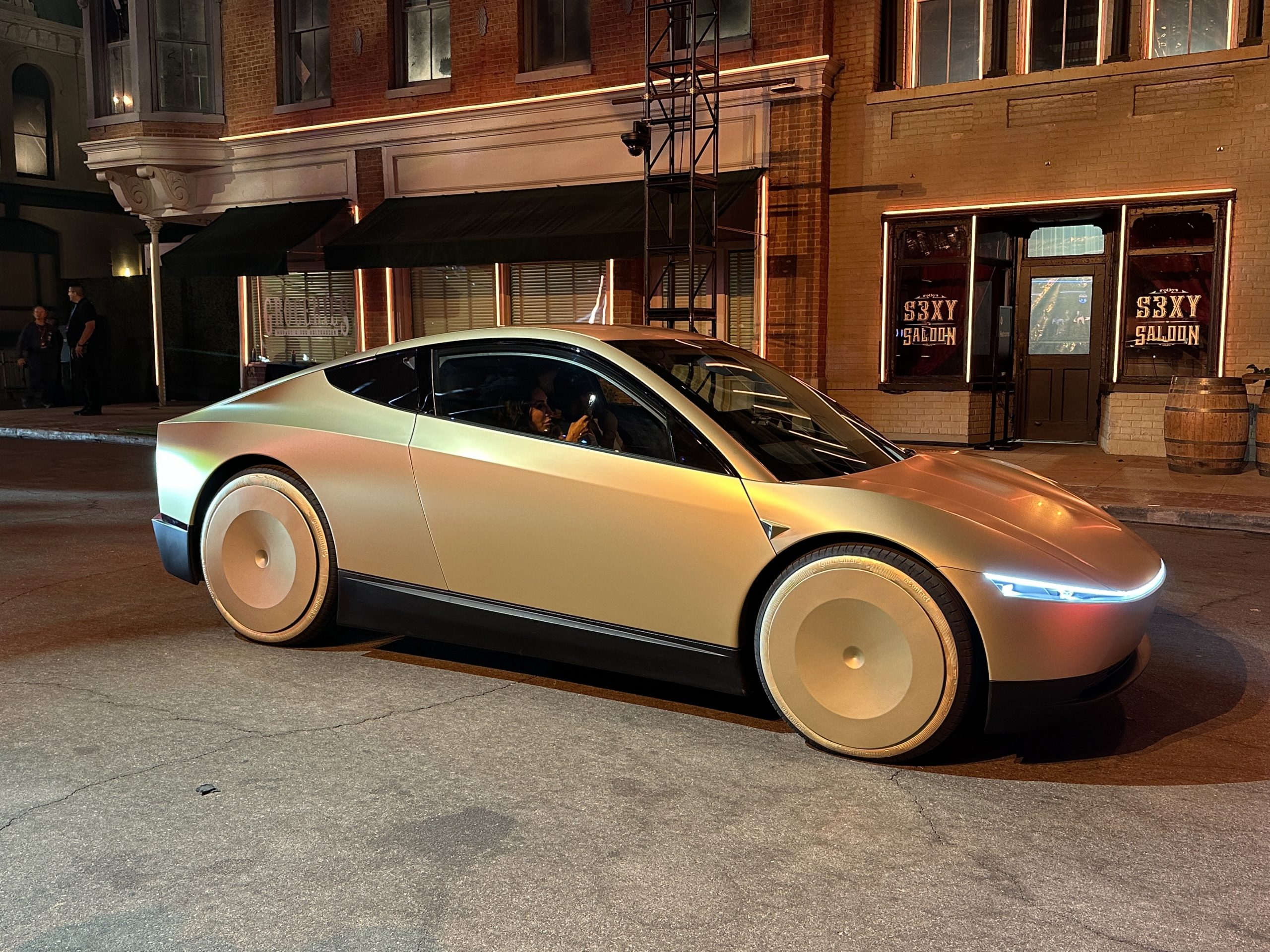
Tesla is planning to launch the Cybercab in the second quarter of next year, and it is designed to be fully autonomous, so much so that the company is planning to build it without a steering wheel or pedals.
However, a Tesla executive said today that the company could ditch that idea altogether in what would be a major shift from the plans the company, and especially its CEO Elon Musk, have announced for the Cybercab.
Earlier today, Robyn Denholm, the company’s Chair for the Board of Directors, revealed that Tesla would potentially switch up its plans for the Cybercab based on potential regulatory requirements.
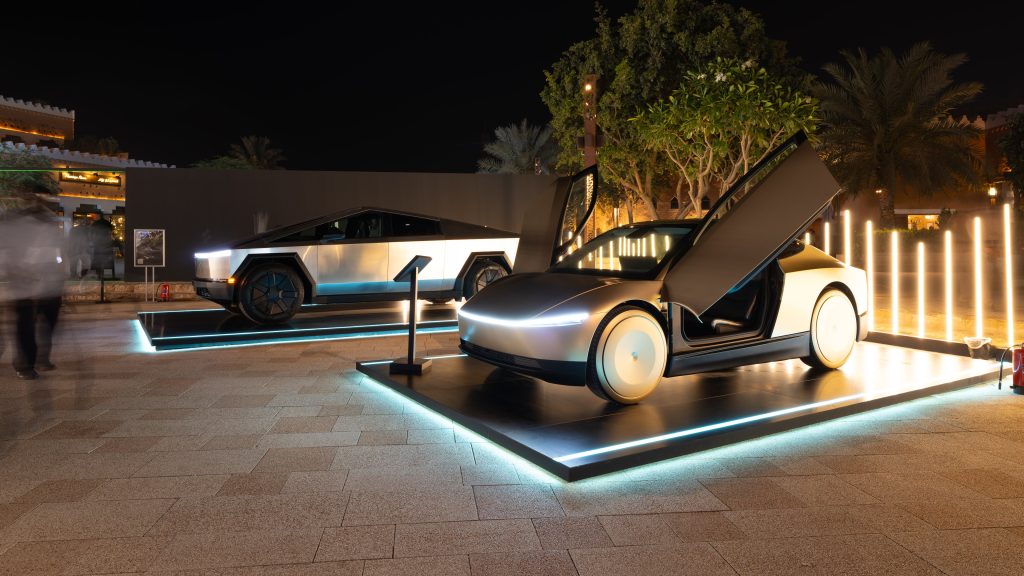
Credit: Tesla Europe & Middle East | X
Currently, even autonomous vehicles that operate for companies like Tesla and Waymo are required to have steering wheels and pedals. From a regulatory perspective, this could halt the plans Tesla has for Cybercab.
Denholm said in an interview with Bloomberg:
“If we have to have a steering wheel, it can have a steering wheel and pedals.”
Interestingly, Musk and Tesla have not veered away from the idea that the vehicle will be without these operational must-haves.
Since the vehicle was revealed last October at the We, Robot event in Los Angeles, Tesla has maintained that the car would be built without a steering wheel or pedals, and would equip two seats, which is what is statistically most popular in ride-sharing, as the vast majority of rides have only one or two passengers.
Musk doubled down on the plans for Cybercab as recently as last week, when he said:
“That’s really a vehicle that’s optimized for full autonomy. It, in fact, does not have a steering wheel or pedals and is really an enduring optimization on minimizing cost per mile for fully considered cost per mile of operation. For our other vehicles, they still have a little bit of the horse carriage thing going on where, obviously, if you’ve got steering wheels and pedals and you’re designing a car that people might want to go very direct past acceleration and tight cornering, like high-performance cars, then you’re going to design a different car than one that is optimized for a comfortable ride and doesn’t expect to go past sort of 85 or 90 miles an hour.”
Cybercab is fully conceptualized as a vehicle that has zero need for pedals or a steering wheel because it is aimed toward being fully reliant on a Level 5 autonomous platform.
Tesla is ramping its hiring for Cybercab vehicle manufacturing roles
Regulators could get in the way of this, however, and although the car could drive itself and be a great solution for ride-hailing, it might need to have these controls to hit the road in the future.
-

 Elon Musk2 weeks ago
Elon Musk2 weeks agoSpaceX posts Starship booster feat that’s so nutty, it doesn’t even look real
-

 Elon Musk2 weeks ago
Elon Musk2 weeks agoTesla Full Self-Driving gets an offer to be insured for ‘almost free’
-

 News2 weeks ago
News2 weeks agoElon Musk confirms Tesla FSD V14.2 will see widespread rollout
-

 News2 weeks ago
News2 weeks agoTesla is adding an interesting feature to its centerscreen in a coming update
-

 News2 weeks ago
News2 weeks agoTesla launches new interior option for Model Y
-

 News2 weeks ago
News2 weeks agoTesla widens rollout of new Full Self-Driving suite to more owners
-

 Elon Musk2 weeks ago
Elon Musk2 weeks agoTesla CEO Elon Musk’s $1 trillion pay package hits first adversity from proxy firm
-

 News1 week ago
News1 week agoTesla might be doing away with a long-included feature with its vehicles


